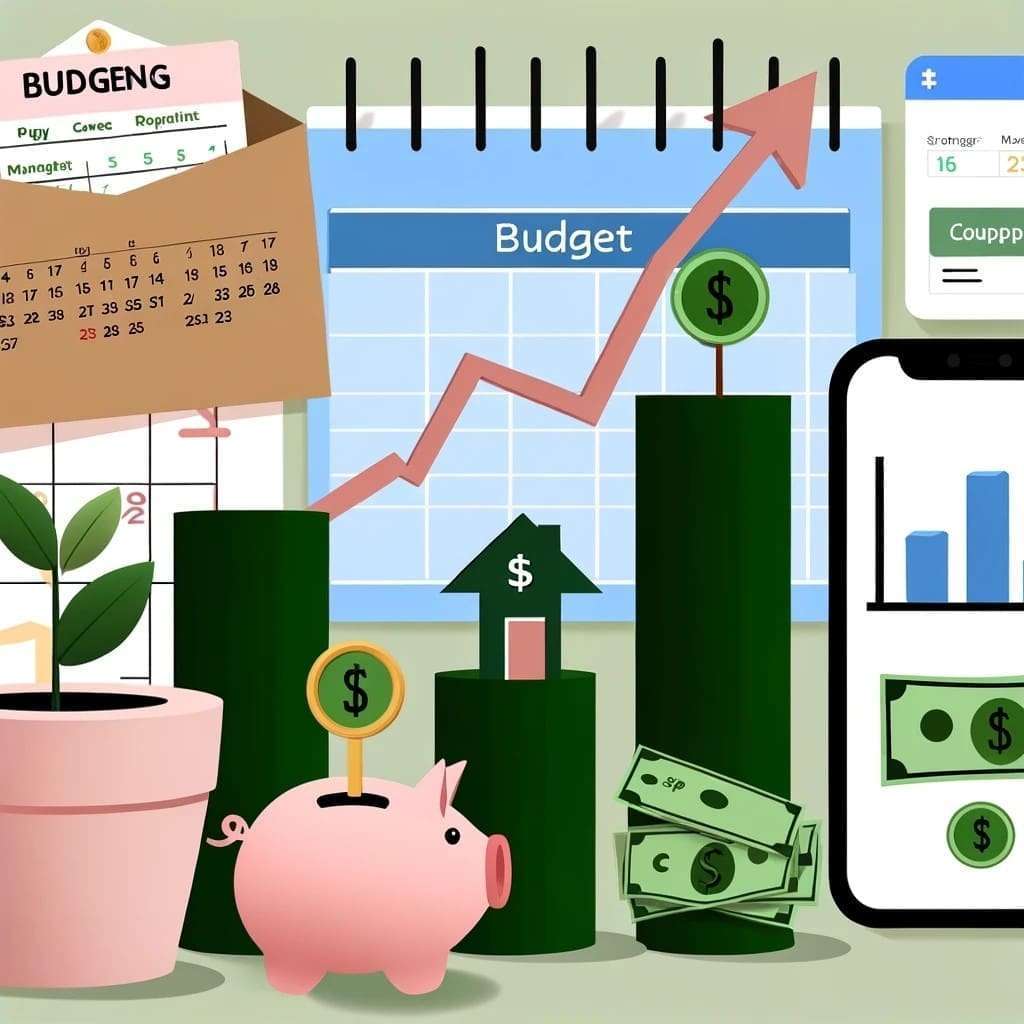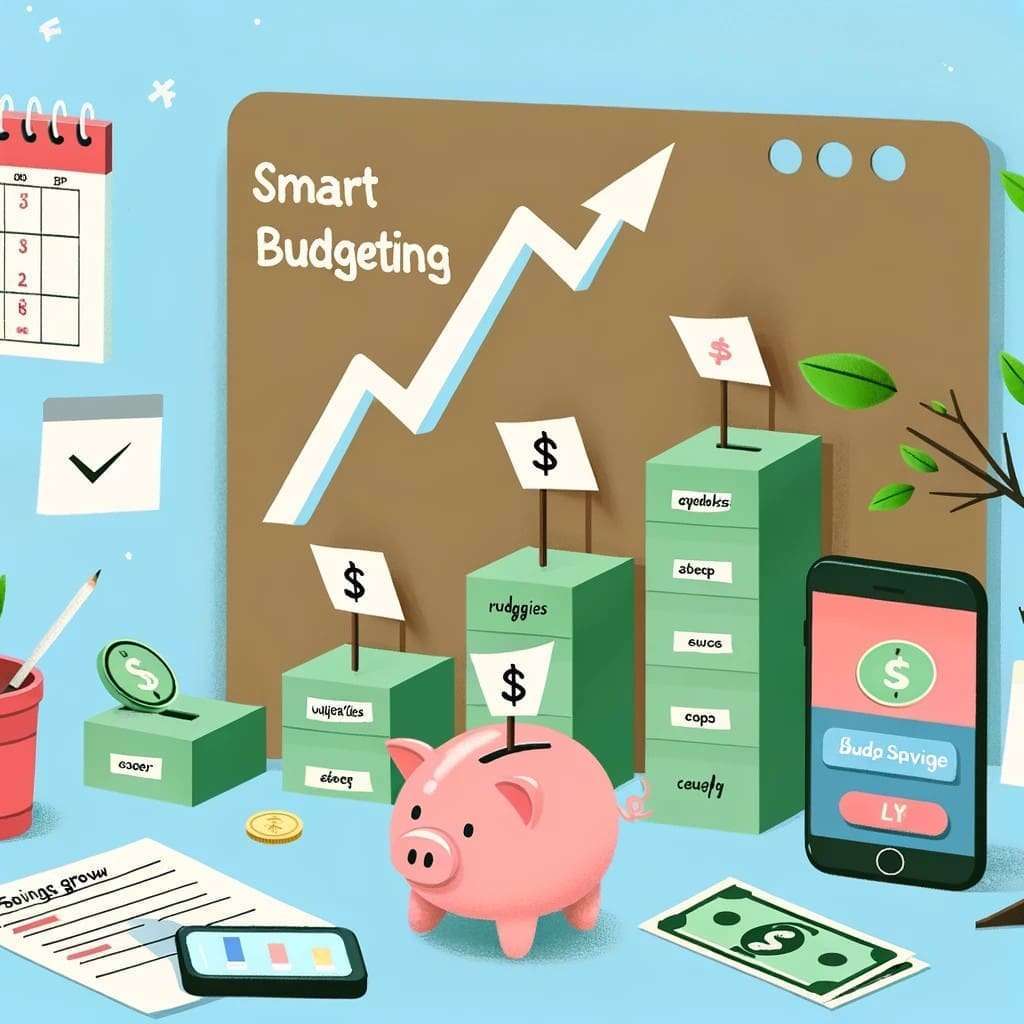
Approx. read time: 7.8 min.
Post: Balancing Bytes and Budgets: My Personal Approach to Financial Management
Balancing Bytes and Budgets: My Personal Approach to Financial Management
Write about your approach to budgeting.
As someone deeply involved in the digital realm and managing a blog, I’ve found that the best approach to budgeting is a blend of practicality, technology, and strategic foresight. Through trial and error, and a lot of research, I’ve tailored a budgeting method that works well for me, both personally and professionally.
First and foremost, I prioritize clarity and simplicity. I start by categorizing my expenses into fixed and variable categories. Fixed expenses are those that don’t change much from month to month, like rent or mortgage, subscriptions, and insurance premiums. Variable expenses, on the other hand, include groceries, entertainment, and other discretionary spending. This distinction helps me understand where my money is going and where I have room to adjust.
I then set clear financial goals. Whether it’s saving for a new computer to enhance my blog, investing in online courses to sharpen my skills, or ensuring I have an emergency fund, having specific objectives guides my budgeting decisions. These goals are not just about numbers; they reflect my values and aspirations, keeping me motivated and focused.
Technology plays a crucial role in my budgeting process. I use a combination of budgeting apps and spreadsheets to track my income and expenses. This dual approach allows me to automate much of the tracking while also giving me the flexibility to customize my budget. I review my budget weekly to make quick adjustments and monthly for a more comprehensive overview. This frequent review process helps me stay on top of my finances and spot trends or issues early.
I also believe in the importance of flexibility in budgeting. Unexpected expenses are a part of life, and my budget needs to accommodate these without derailing my financial goals. I allocate a portion of my budget to a “miscellaneous” category to cover such surprises. This flexibility has saved me from stress and debt on more than one occasion.
Another key aspect of my budgeting approach is the focus on reducing unnecessary expenses. I regularly audit my subscriptions and recurring payments to ensure I’m only paying for what I truly use and need. This has led to significant savings over time, which I can then redirect towards my savings or investment goals.
Finally, I’m a strong advocate for continuous learning and improvement in all aspects of life, including budgeting. I frequently read financial blogs, listen to podcasts, and engage with online communities to learn new strategies and tools. This ongoing education helps me refine my budgeting technique, adapt to changes in my financial situation, and work towards achieving my financial goals more efficiently.
In summary, my approach to budgeting is a balanced mix of organization, technology, flexibility, and continuous learning. By staying disciplined yet adaptable, I manage my finances in a way that supports my lifestyle and long-term objectives, ensuring that I can invest in my passions and secure my financial future.
Balancing Bytes and Budgets: My Personal Approach to Financial Management
- Track Your Spending: Keep an eye on every dollar you spend. This helps you identify where you can cut back.
- Set Realistic Goals: Define clear, achievable financial goals, whether it’s saving for a vacation, retirement, or paying off debt.
- Use Budgeting Tools: Leverage apps or software for budgeting to streamline the process and make it more efficient.
- Pay Yourself First: Allocate a portion of your income to savings or investments before spending on anything else.
- Create an Emergency Fund: Aim to have at least three to six months’ worth of living expenses saved to cover unexpected costs.
- Cut Unnecessary Expenses: Regularly review your spending and cut non-essential expenses.
- Automate Savings and Bills: Automate as much as possible to avoid late fees on bills and ensure you’re consistently saving.
- Use the Envelope System: For variable expenses like groceries and entertainment, consider using cash in envelopes to limit spending.
- Check Subscriptions: Regularly review subscription services to cancel those you no longer use or need.
- Plan for Large Expenses: Set aside money each month for large, predictable expenses like holiday gifts or annual insurance premiums.
- Reduce Debt: Focus on paying down high-interest debt, which can free up more money for savings.
- Shop Smart: Use coupons, compare prices, and buy in bulk where it makes sense to save money on groceries and other essentials.
- Cook at Home: Eating out less and cooking more meals at home can significantly reduce food expenses.
- DIY When Possible: Before hiring out for services, see if you can safely do it yourself to save money.
- Review and Adjust Regularly: Your budget isn’t set in stone. Review and adjust it regularly to reflect changes in your income and expenses.
- Use Cash-Back and Rewards Programs: Take advantage of cash-back offers and rewards programs for purchases you’re already making.
- Avoid Impulse Buys: Give yourself a waiting period before making non-essential purchases to avoid impulse buying.
- Prioritize Spending: Spend money on what truly matters to you and cut back on things that don’t add value to your life.
- Find Free Entertainment: Look for free or low-cost entertainment options to enjoy without breaking the bank.
- Invest in Quality: Sometimes, spending more upfront for a quality item that lasts longer can save money in the long run.
.
.
Balancing Bytes and Budgets: My Personal Approach to Financial Management
Another famouse form of budgeting, envelope budgeting is a simple, yet effective, budgeting method where you allocate your cash into different envelopes, each designated for a specific spending category such as groceries, entertainment, utilities, and savings. The basic premise is to use only the cash from these envelopes for your expenses, preventing you from overspending in any category. Here’s a deeper look into why it works:
1. Tangible Visualization of Spending
Envelope budgeting allows you to physically see how much money you have allocated for each expense category. This tangible aspect helps you better understand your spending habits and makes it easier to identify areas where you might be overspending.
2. Prevents Overspending
Since you’re limited to spending the money allocated in each envelope, it naturally prevents you from overspending. Once the cash in an envelope is gone, you can’t spend any more in that category until you refill the envelope in the next budgeting period. This discipline is fundamental in maintaining a healthy financial state.
3. Simplifies Budget Management
This method simplifies the process of managing your budget. By dividing your cash into envelopes, you don’t have to track every single transaction in detail. Instead, you only need to monitor the cash levels in each envelope.
4. Encourages Savings
By including a savings category in your envelope system, you treat savings like any other expense, ensuring you set aside a portion of your income. This can help build an emergency fund or save for future goals systematically.
5. Flexible and Adaptable
Envelope budgeting is highly flexible. You can adjust the amounts in each envelope or even change the categories as your financial situation or goals evolve. This adaptability makes it a practical choice for many people.
6. Provides Immediate Feedback
The immediate feedback loop is another reason envelope budgeting is effective. If you see an envelope emptying faster than anticipated, you get instant feedback that you may need to adjust your spending habits in that category.
7. Reduces Reliance on Credit
By using cash for most transactions, you’re less likely to rely on credit cards and accumulate debt. This can also save you money in the long run by avoiding interest charges and fees associated with credit card debt.
Why It Works – Balancing Bytes and Budgets: My Personal Approach to Financial Management
The effectiveness of envelope budgeting lies in its simplicity and the psychological impact of dealing with physical cash. Physically handing over cash is more impactful than swiping a card, making you more mindful of your spending. It also imposes a hard limit on your spending, which can be more effective than merely tracking expenses after the fact. Additionally, it’s a straightforward system that doesn’t require complex software or financial knowledge, making it accessible to a wide range of people.
In summary, envelope budgeting works because it combines psychological incentives with practical, easy-to-manage controls on spending. It’s particularly effective for those who prefer a hands-on approach to managing their money and for anyone looking to gain better control over their financial situation.

Related Videos:
Related Posts:
Budgeting & Investing for Young Adults(Opens in a new browser tab) https://miltonmarketing.com/event/budgeting-investing-for-young-adults/
Techie vs. The World: A Day in Bytes and Bites(Opens in a new browser tab) https://miltonmarketing.com/blogging/techie-vs-the-world-a-day-in-bytes-and-bites/
How much does it cost to build a WordPress website?(Opens in a new browser tab) https://miltonmarketing.com/cms/wordpress/how-much-does-it-cost-to-build-a-wordpress-website/
How have the tax rules and benefits changed for individuals and families in Canada for the 2024 tax year?(Opens in a new browser tab) https://miltonmarketing.com/faq-items/how-have-the-tax-rules-and-benefits-changed-for-individuals-and-families-in-canada-for-the-2024-tax-year/
ATM hacking has gotten so easy, the malware’s a game(Opens in a new browser tab) https://miltonmarketing.com/news/atm-hacking-has-gotten-so-easy-the-malwares-a-game/









